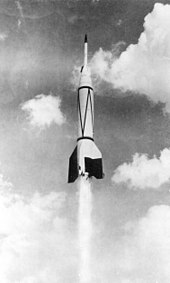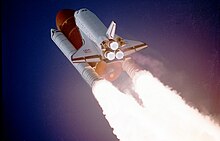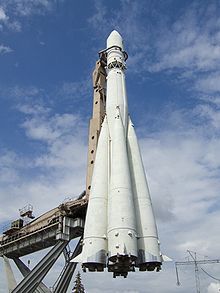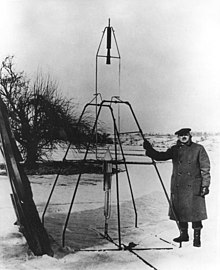Rocket
This article is about vehicles powered by rocket engines. For other uses, see Rocket (disambiguation).
A Soyuz-U, at Baikonur Site 1/5
Launch of Apollo 15 Saturn V rocket: T - 30 s through T + 40 s
Rockets for military and recreational uses date back to at least 13th century China.[2] Significant scientific, interplanetary and industrial use did not occur until the 20th century, when rocketry was the enabling technology of the Space Age, including setting foot on the moon.
Rockets are used for fireworks, weaponry, ejection seats, launch vehicles for artificial satellites, human spaceflight and space exploration. While comparatively inefficient for low speed use, they are very lightweight and powerful, capable of generating large accelerations and of attaining extremely high speeds with reasonable efficiency.
Chemical rockets are the most common type of rocket and they typically create their exhaust by the combustion of rocket propellant. Chemical rockets store a large amount of energy in an easily released form, and can be very dangerous. However, careful design, testing, construction and use minimizes risks.









